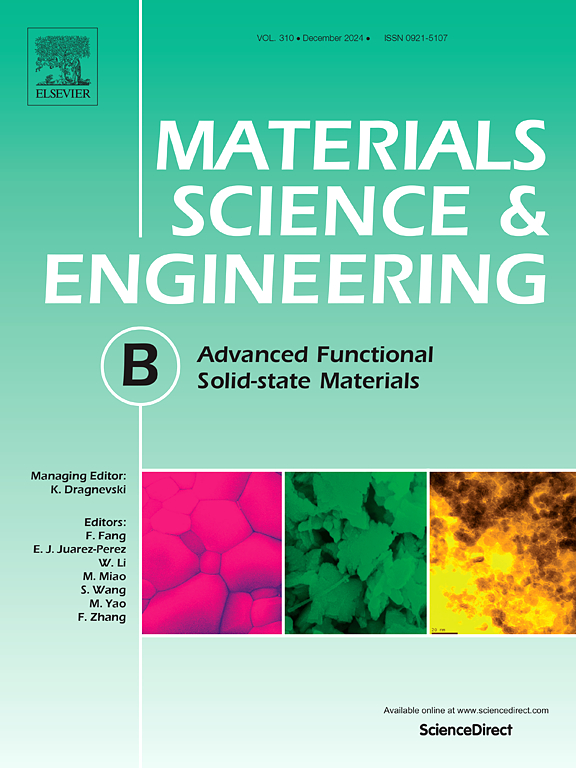Thermophysical properties and Optimization of modified palm Oil-Amine reinforced biocomposites for lightweight and insulating applications
IF 3.9
3区 材料科学
Q2 MATERIALS SCIENCE, MULTIDISCIPLINARY
引用次数: 0
Abstract
The aim of this study is to investigate various thermophysical properties of modified palm oil-amine (MPOA) reinforced biocomposites to optimize these materials to meet the requirements of lightness and insulation. The effects of MPOA addition to biocomposites on bulk density, surface hardness, thermal conductivity coefficient, and activation energy have been evaluated. In addition, the structural and physical properties of these biocomposites are aimed to determine their potential use as lightweight and thermal insulation materials. The results show that MPOA incorporation significantly affects the bulk density, Shore A hardness, thermal conductivity, and thermal stability of biocomposites. The addition of MPOA provides significant benefits for lightweight biomaterials by reducing bulk density. However, high MPOA content decreases the surface hardness of the biocomposite, and with zirconium silicate (ZrSiO4), this drawback is eliminated and the curing time is reduced. Increasing MPOA ratios also improve the insulation properties of biocomposites by reducing the thermal conductivity coefficient. Thermal decomposition experiment results show that higher MPOA content reduces thermal stability. Scanning electron microscopy (SEM) reveals that high levels of MPOA lead to increased surface porosity and irregularities, negatively affecting surface morphology. An optimal MPOA reinforcement level of 5 wt% provides a balance between desirable properties such as reduced density and improved thermal insulation while minimizing adverse morphological effects. Fourier-transform infrared spectroscopy (FTIR) confirms the presence of epoxy resin and the successful chemical modification of palm oil to create bioepoxy feedstock. MPOA reinforcement offers benefits such as reduced bulk density and improved thermal insulation while addressing challenges in surface morphology, mechanical properties, and thermal stability. The study concludes that biocomposites with 5 wt% MPOA provide optimum stability, making them suitable for applications requiring lightweight and thermally insulating materials without significantly compromising structural integrity. This research, the long-term performance of biocomposites, and future investigations into their potential applications will further expand their practical applicability.

求助全文
约1分钟内获得全文
求助全文
来源期刊

Materials Science and Engineering: B
工程技术-材料科学:综合
CiteScore
5.60
自引率
2.80%
发文量
481
审稿时长
3.5 months
期刊介绍:
The journal provides an international medium for the publication of theoretical and experimental studies and reviews related to the electronic, electrochemical, ionic, magnetic, optical, and biosensing properties of solid state materials in bulk, thin film and particulate forms. Papers dealing with synthesis, processing, characterization, structure, physical properties and computational aspects of nano-crystalline, crystalline, amorphous and glassy forms of ceramics, semiconductors, layered insertion compounds, low-dimensional compounds and systems, fast-ion conductors, polymers and dielectrics are viewed as suitable for publication. Articles focused on nano-structured aspects of these advanced solid-state materials will also be considered suitable.
 求助内容:
求助内容: 应助结果提醒方式:
应助结果提醒方式:


